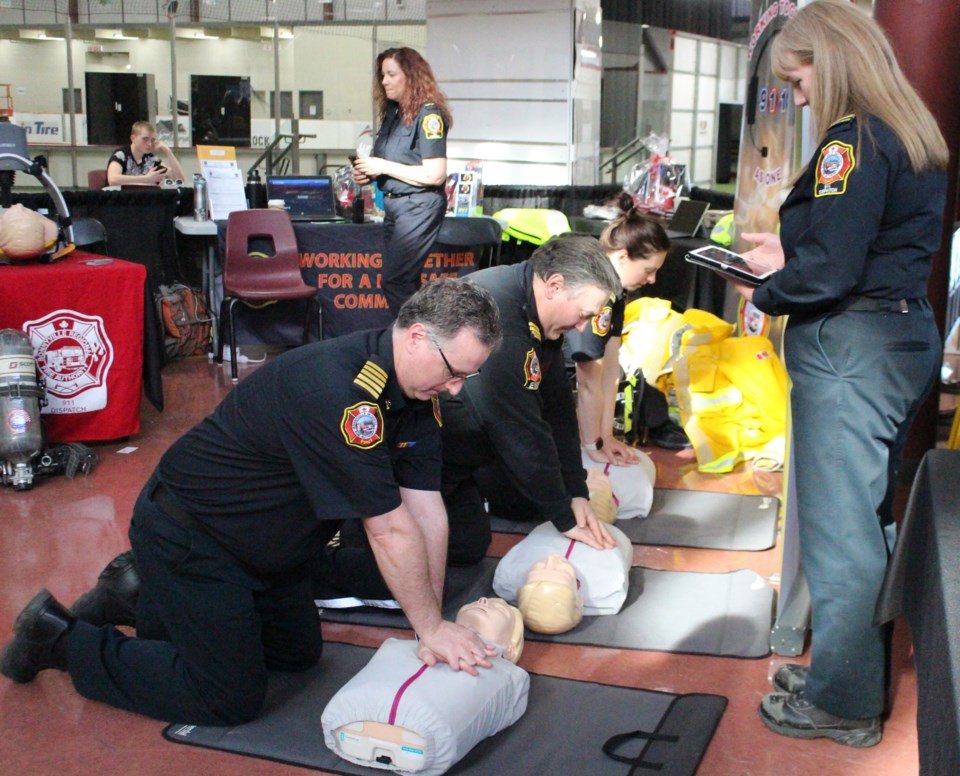LAKELAND – Across Canada, there is no other first-line profession that relies on volunteers as much as the fire service.
There were approximately 90,000 volunteer firefighters working for fire departments across Canada in 2022, making up 71 per cent of the country’s total firefighting force. Only 29 per cent of Canadian firefighters are career firefighters, according to The Great Canadian Fire Census 2022 report.
The annual fire census report is published by the Canadian Association of Fire Chiefs (CAFC). Founded in 1909, CAFC is an independent, non-profit organization representing approximately 3,500 fire departments across Canada.
There are another 15,000 firefighters needed, many of those positions are volunteer based.
“No other first-line and first response professions out there has that high of a percentage of volunteers,” said Dan Heney, the regional fire chief for the Bonnyville Regional Fire Authority (BRFA).
“We're continuing to see the costs of maintaining fire services increase and we're continuing to see fire services push off major purchases, push off training, push off significant capital purchases, because they are continually running into shortfalls around the budget, which is difficult to comprehend when almost 80 per cent of the workforce is still a volunteer workforce.”
Heney says it's important that the public and society as a whole gets to know the numbers shared by the fire census report.
“When the backbone of an entire industry is volunteerism, we need to do more as municipalities to make an incentive for people to be volunteers. Meaning we shouldn't constantly be arguing over new fire halls or the new fire truck, or ‘No, we can't afford this, or we can't afford that’,” said Heney.
More often than not, municipalities opt to rely on volunteer fire services because they simply can’t afford to pay career firefighters.
“The average firefighter in Alberta makes just shy of $100,000 a year... So, depending on whether you have lieutenants and captains, the price just goes up from there,” said Heney, who previously worked for the Calgary Fire Department.
Municipalities relying on volunteer firefighters need to prioritize finding ways to make sure that there are enough bodies to fill these first responder volunteer positions.
“We're talking about the local teacher, the local business owner, the local shift worker, who's getting up at 3 a.m., even though they may have to hop a bus to Foster Creek at 7 a.m. Yet, they are running out to a motor vehicle collision and standing on the highway in the dark, hoping that they don't get hit,” stated the regional fire chief.
“There are things we can do to make them feel appreciated that don't cost a lot of money. But really, it's about the messaging. Are we funding training, are we buying the right equipment to keep them safe?”
Another challenged faced by volunteer fire departments across the country is the loss of generations of firefighters who are retiring, while fewer men and women are replacing them.
“If you talk to our station chiefs, I wouldn't be surprised if any one of them said that they aren't concerned with recruitment and retention. Just simply having enough people,” he said.
According to The Great Canadian Fire Census, 25 per cent of Canada’s firefighters are over 50 years old. That is about 31,000 firefighters expected to leave the profession within ten years.
A few years ago, the BRFA presented 18 volunteer members from Goodridge Fire Department 30-year service medals.
“What does that tell you about the next 10 years if we don't get recruitment levels higher?” posed Heney.
The number of people volunteering continues to trend in the wrong direction. In 2016, there were a reported 156,000 firefighters. In 2022 this number fell to 126,000, states CAFC.
Meanwhile, firefighters are facing an increase in call volumes. Of the 2-million calls responded to over a 12-month period, 50 per cent were for medical emergencies, 30 per cent were related to an all-hazard response, 10 per cent were for climate emergencies, and only 10 per cent of calls were for fire suppression.
“Countrywide, it's showing that our EMS systems have been used inappropriately for a long, long time, and now they're stressed to the breaking point and are relying on firefighters to pick up the slack,” the regional fire chief pointed out.
“Our firefighters respond to what are termed Delta and Echo calls. Those are things like respiratory distress or respiratory arrest, cardiac arrest, overdoses, people who are unconscious – the most serious medical calls. So, if 50 per cent of their call volume is going to the most serious medical calls, are we exposing our members to a lot more situations that are potentially going to involve some level of mental trauma? I would say so.”
In Alberta, there are a little over 9,000 volunteer firefighters.



